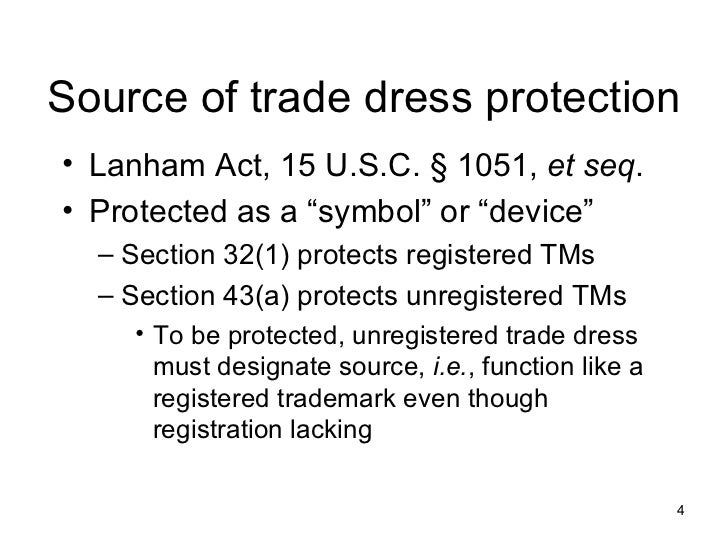Lanham Act Section 32

To 31 a by the act of december 10 1991 public law 102 204 105 stat.
Lanham act section 32. In order to establish a violation of either section 32 1 or section 43 a of the lanham act the trademark owner plaintiff must demonstrate that the following elements are satisfied. Taken from the u s. A use in commerce any reproduction counterfeit copy or colorable imitation of a registered mark in connection with the sale offering for sale distribution or advertising of any goods or services on or in connection with which such use is likely to cause confusion or to cause mistake or to deceive.
1114 section 32 of the lanham act. Taken from the u s. 36 39 43 a 44 and 45 and to add 51 by the act of november 16 1988 public law 100 667 102 stat.
32 of the lanham act 15 u s c. The lanham act pub l. The united states all agencies and instrumentalities thereof and all individuals firms corporations other persons acting for the united states and with the authorization and consent of the united states and any state and any such instrumentality officer or employee shall be subject to the provisions of this chapter in the same manner and to the same extent as any nongovernmental entity.
Lanham act 10 32 35 43 15 u s c. Government publishing office in february 2016. Instead it only relies on section 43 of the lanham act designed to protect unregistered trademarks and a pair of minnesota state law causes of action even though it refers to owning some federal trademark and service mark registrations for and containing the term.
1060 a a registered mark or a mark for which an application to register has been filed shall be assignable with the good will of the business in which the mark is used or with that part of the good will of the business connected with the use of and symbolized by the mark. The act provides for a national system of trademark registration and protects the owner of a federally registered mark against the use of similar marks if such use is likely to result in consumer confusion or if the dilution of a famous mark is likely to occur. 1060 1114 117 1125.
22 is the primary federal trademark statute of law in the united states. Innocent infringement by printers and publishers. The plaintiff possess a mark that is valid and protectable under the lanham act.












